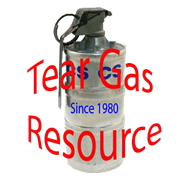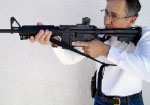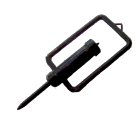Common Types of Smoke
- Anthroquinone (AN) is a micro-particulate substance that is comprised of potassium chloride, baker’s sugar, magnesium carbonate, and liquid nitrocellulose. It is wet-mixed during manufacture and dried on racks, then granulated and compressed into fast-burning pellets of various sizes.
- Fog Oil Smoke (FS) is generated by injecting mineral oil into a heated manifold. The oil vaporizes upon heating and condenses when exposed to the atmosphere, producing respirable particles. FS smoke liquid can be corrosive to some metals when exposed to moisture.
- Hexachlorethane (HC) is a micro-particulate substance comprised of aluminum powder, zinc oxide, and hexachlorethane. During manufacture it is compressed into slow burning blocks.
- SAF-Smoke or NT-Smoke (Purified Terephilalic Acid) is vividly white and essentially non-toxic. OSHA has designated SAF smoked as non-hazardous and non-carcinogenic. This type of smoke is ideal for training exercises.
Tactical Uses
Tactical officers train to use concealment whenever and wherever they can find it. Smoke should always be considered a form of concealment, never cover. Cover will stop bullets, concealment will not. Concealment only hides officers from view. Most tactical units attempt to get into deployment positions without alerting the suspect to their presence.
How well smoke can work in a particular operation depends upon situational circumstances such as weather, terrain, distance, cover, personnel, and planning.
Smoke will not make an individual officer or a tactical team invisible. It can help make specific movements invisible, but it may also alert the suspect that something is afoot. Sophisticated thermal imaging devices can actually “see” through smoke, and some infrared systems can reveal heat sources within smoke.
The use of smoke can also hinder tactical operations by obstructing views of perimeter teams, snipers, avenues of escape, and aerial support. Smoke must be used in sufficient  amounts, and over large enough areas to ensure the greatest chance for success; otherwise, it will only draw the suspect’s attention to the tactical operation and deployment positions.
amounts, and over large enough areas to ensure the greatest chance for success; otherwise, it will only draw the suspect’s attention to the tactical operation and deployment positions.
The tactical unit must keep a rigorous watch on the suspect to ensure that he doesn’t take advantage of the smoke to move his position or escape. Releasing smoke into an area of operation reduces visibility, making it difficult to see objects, people, and movement. The lack of visibility makes it harder for officers to perform required actions such as shooting, moving, and communicating, which are all essential to the success of a tactical law enforcement operation.
Some of the important tactical aspects in the use of smoke are:
1. Pre-operation planning and training.
2. Ensure unity of effort.
3. Direct police strengths against the suspect’s weaknesses.
4. Sustain the fight.
5. Move fast, strike hard, and finish rapidly.
6. Use terrain and weather.
7. Protect your force.
8. Remember: Smoke only conceals and will not provide cover.





